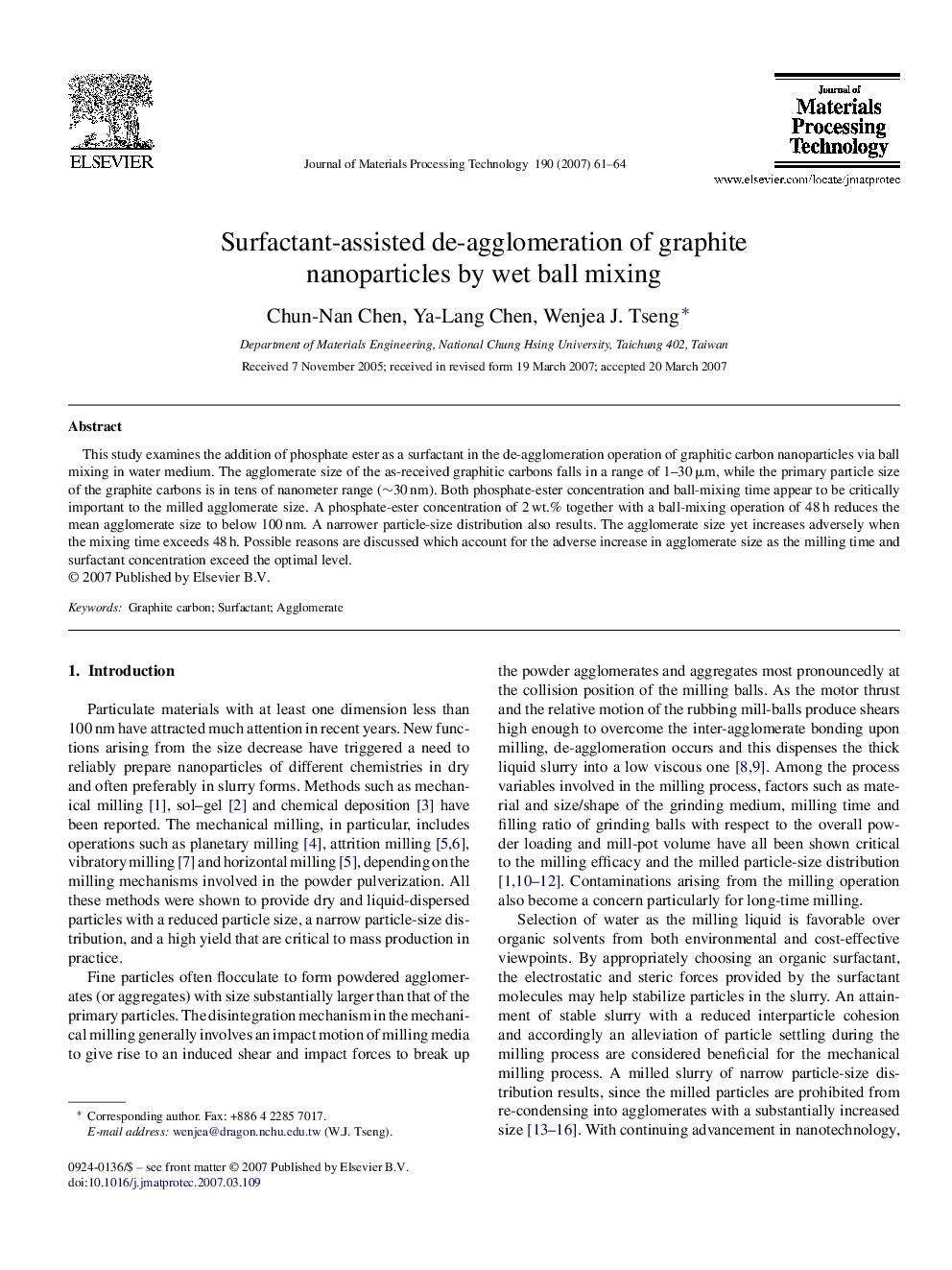| Article ID | Journal | Published Year | Pages | File Type |
|---|---|---|---|---|
| 794030 | Journal of Materials Processing Technology | 2007 | 4 Pages |
This study examines the addition of phosphate ester as a surfactant in the de-agglomeration operation of graphitic carbon nanoparticles via ball mixing in water medium. The agglomerate size of the as-received graphitic carbons falls in a range of 1–30 μm, while the primary particle size of the graphite carbons is in tens of nanometer range (∼30 nm). Both phosphate-ester concentration and ball-mixing time appear to be critically important to the milled agglomerate size. A phosphate-ester concentration of 2 wt.% together with a ball-mixing operation of 48 h reduces the mean agglomerate size to below 100 nm. A narrower particle-size distribution also results. The agglomerate size yet increases adversely when the mixing time exceeds 48 h. Possible reasons are discussed which account for the adverse increase in agglomerate size as the milling time and surfactant concentration exceed the optimal level.
